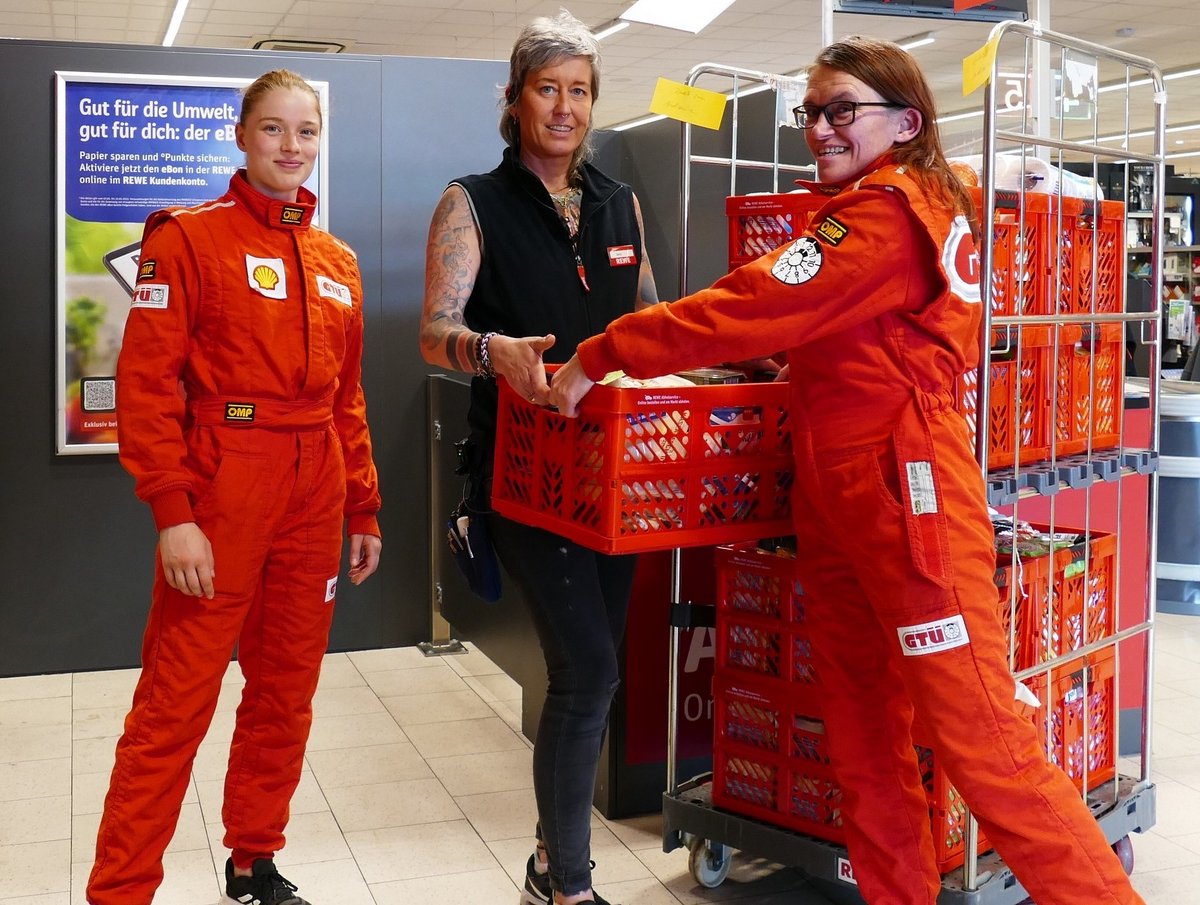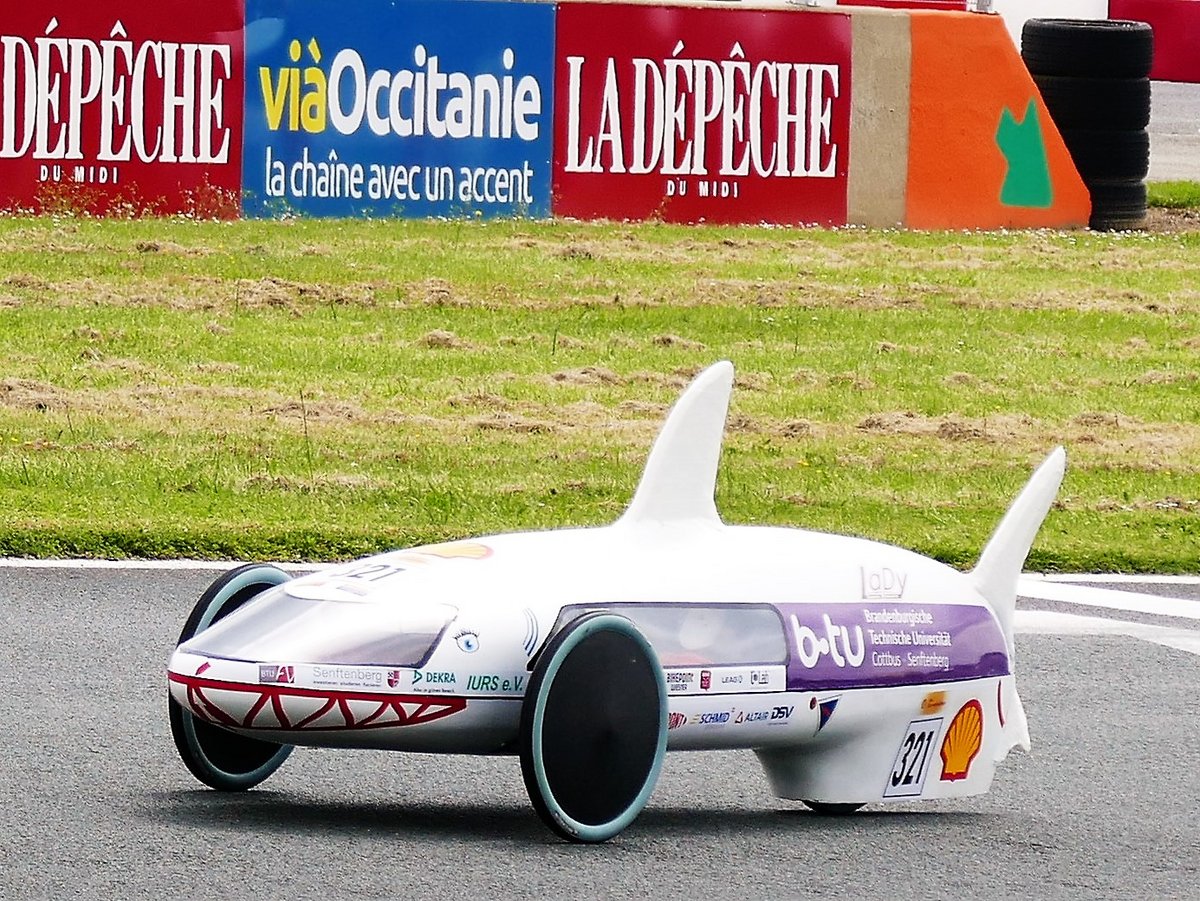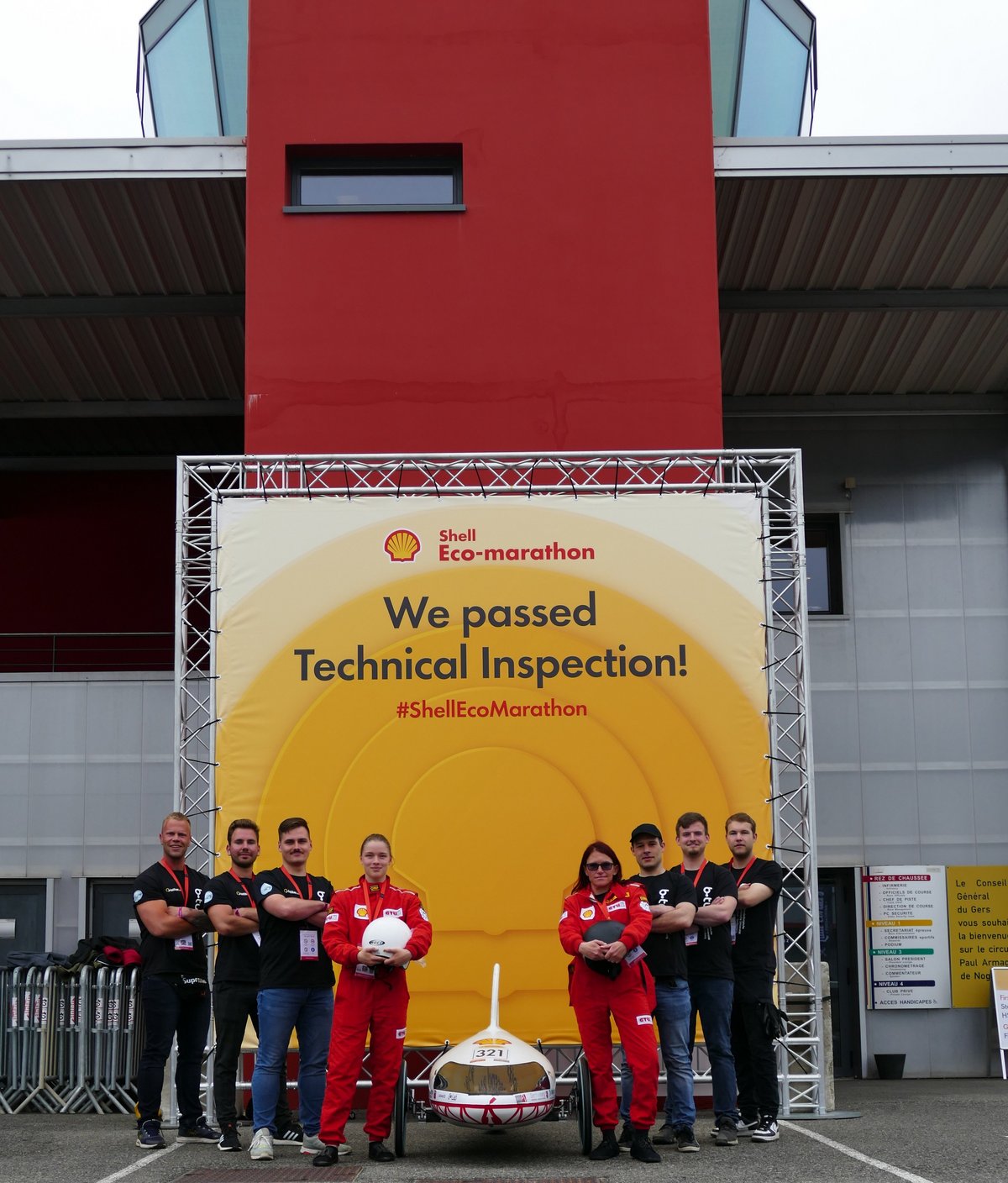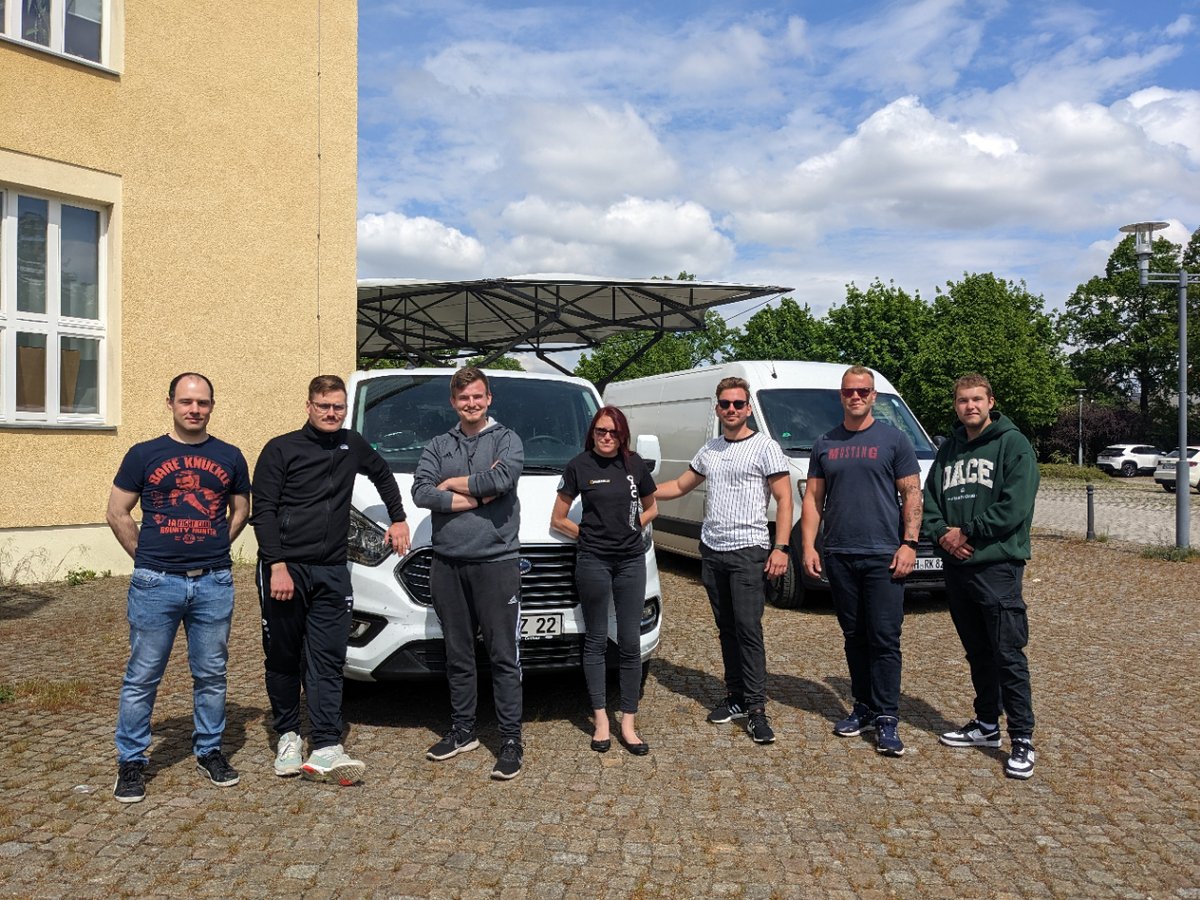Team Lausitz Dynamics with the energy saving mobile "Shark LaDy" in France
After several years of interruption due to the Corona pandemic, BTU students from the Senftenberg campus team again demonstrated the results of lengthy and intensive development work under real racing conditions. In the "Prototype battery" category, they competed in front of numerous spectators against 18 other teams from universities in Europe and Africa.
For the duration of five days, everything was in the spirit of the competition and the common big goal of paving the way to a cleaner future and integrating research for sustainability into the community. The goal of the competition is not high speed, but to design a vehicle that covers a certain distance using as little fuel or energy as possible.
With the last scoring run, the BTU team was able to achieve the following result: 455.7 km/kWh. Thus, the vehicle would travel about 3,870 kilometers with the energy content of one liter of gasoline (equivalent to about 8.5 kWh).
The interdisciplinary BTU team consists of a total of twelve students from the electrical engineering, mechanical engineering, industrial engineering and therapy science programs. The student team leader is Jan Michael Arens, who is studying electrical engineering and is also responsible for the motor controller. Theresa Anders, a student of therapy sciences, is the driver of the energy-saving mobile "Shark LaDy".
The project management is in the hands of Prof. Dr.-Ing. habil. Sylvio Simon, who heads the bachelor's and master's programs in mechanical engineering and the machine tools department at the BTU. The technical supervisors are the employees Sindy Schmidt (also as a substitute driver) and Shadi Sykora.
Testing the limits of mobility
For this year's competition participation, the vehicle of Team Lausitz Dynamics from 2017 for the "Prototype battery" class has been adapted to the current regulations and further optimized since October 2022. To get the energy-saving vehicle "Shark LaDy" ready for the track in southern France, the students replaced its Bowden cable brake with a hydraulic brake prescribed in the new regulations.
In addition,the vehicle had to be adapted to the increased safety standards and the vehicle weight, which is crucial for the competition, had to be further reduced. In terms of the drivetrain, the initial gear transmission was replaced by a chain transmission, which is now also driven by a new engine. For optimal results, the software of the motor controller was also adapted to the conditions of the track and the riders in order to maintain the average speed of 25 kilometers per hour with the highest possible efficiency.
Thanks to all supporters
The optimization of the vehicle and also the possibility of participating in the international competition itself could only be realized with the help of numerous supporters from the region - be it financial contributions or contributions in kind. The team would like to take this opportunity to thank all those who have supported it.
Further information: https://www.b-tu.de/lausitz-dynamics
Specialist contact
Institut für Elektrische Systeme und Energielogistik
T +49 (0) 3573 85-532
Sindy.Schmidt(at)B-TU.De
Press contact
Kommunikation und Marketing
T +49 (0) 3573 85-283
ralf-peter.witzmann(at)b-tu.de






